Art World
Trying to Remember What Office Life Is Like? Here Are Five Artworks That Will Bring the Memories Flooding Back
Whether you're back in the office or WFH permanent, these artworks will capture some very different company moods.
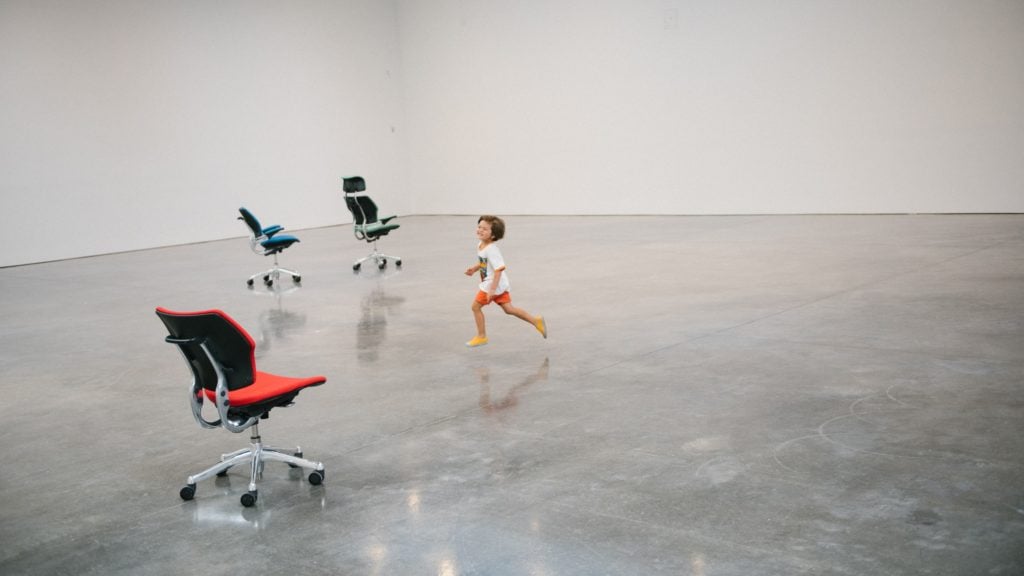
Whether you're back in the office or WFH permanent, these artworks will capture some very different company moods.

Katie White

Offices have been with us for centuries. In the 1600s, professionals in major European cities began to work in defined spaces, outside the home. A few centuries later, the modern open-plan offices emerged during the early decades of the 20th century.
But over all those years, offices have not particularly captivated the interest of artists—at least that’s what art historical canon would seem to suggest.
Paintings of libraries? They’re all over the place! Artist studios? A glutton. Factory work? Ben Shahn’s our guy. Even the subway commute has garnered its fair share of artistic attention. But the white-collar workspace has inspired no similar interest.
But there are notable exceptions. And with so many people considering the return to their desks, we’ve culled together a few artworks that capture a few unique office moods.
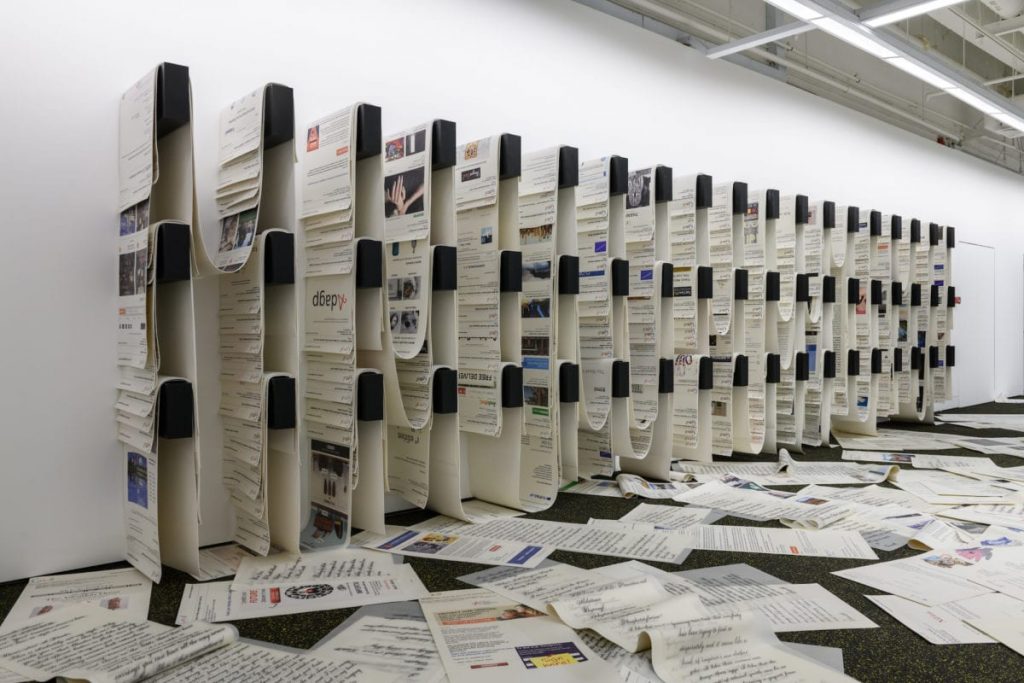
Camille Henrot, Office of Unanswered Emails (2016). Courtesy of Konig Galerie and the Institute of Contemporary Arts, Singapore. Photo by Weizhong Deng.
Have you considered this? The return to the non-virtual office also equals… the return the world of printers and print-outs?
Henrot’s installation, seen in the 9th Berlin Biennale in 2016, brings together print-outs of massive amounts of urgent email missives from charitable organizations demanding attention, combined with her own, personalized emotional responses to them (written in cursive).
Office of Unanswered Emails is a nice depiction of the feeling of trying to maintain some kind of human-level response within the always-on attention economy—but just looking at this photo also sends a shiver of dread down our spines about what our desks will look like when we get back to the office.
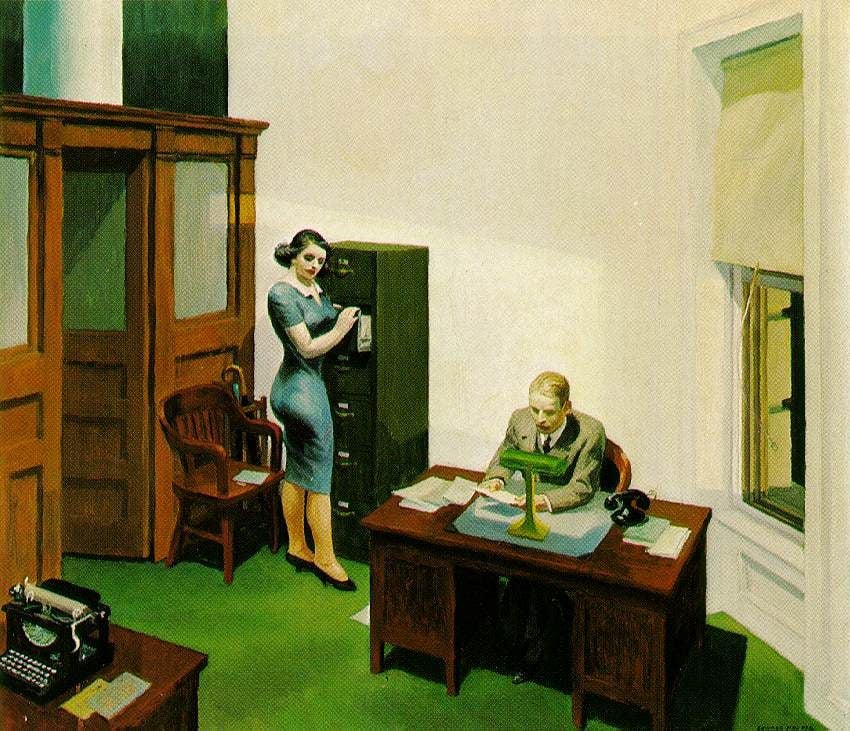
Edward Hopper, Office at Night (1940). Courtesy of Wikimedia Commons.
Though not one of his critically best-regarded works, Hopper’s 1940 painting Office at Night is oddly stirring. The window is open, letting office light bleed into the night sky. A man, seated at his desk, reads from a paper. A woman (modeled by Hopper’s wife Jo) stands at a filing cabinet turned toward him.
Hopper imbues the scene with a sense of hyper-alertness. The figures seem silently aware of one another, and the viewers are aware of their aloneness, together. Whatever this duo is up to, we sense romantic tension.
Filmmakers have often credited Hopper’s cinematic sensibility as an influence, and we see why. This office scene brings to mind Mad Men and, for Maggie Gyllenhal fans, the 2002 movie Secretary.
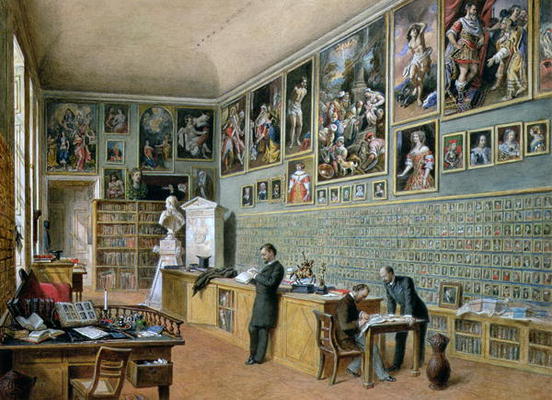
Carl Goebel, The Library, in use as an office of the Ambraser Gallery in the Lower Belvedere (1879).
While some employees may go MIA at home, what can match the annoyance of a team member who is spaced out and letting others do the work in one’s own presence?
We’re not exactly sure what’s going on in this image of three gentlemen using a gallery of Vienna’s Belvedere palace as an office, but the two guys on the right look hard at work, whereas as the black-clad man at center is dawdling over a book—the old school form of procrastination.
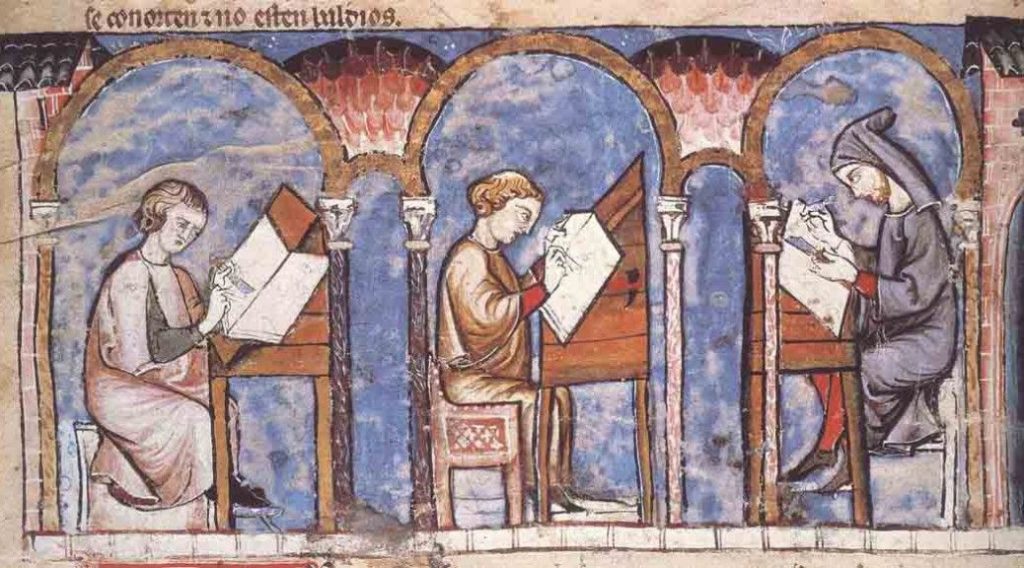
An illumination depicting a scriptorium, from a manuscript in the Biblioteca de San Lorenzo de El Escorial, Madrid, Spain, c. 14th century AD.
Question: Were scriptoriums the first coworking spaces?
Images of medieval monks toiling away at their individual illuminations on desks certainly give us the impression. We’re thinking of a Gregorian-chant-plus-earbuds kind of vibe.
Still, after months of working in total isolation, the only shared work spaces we’ll be contemplating are those that have taken a vow of silence.
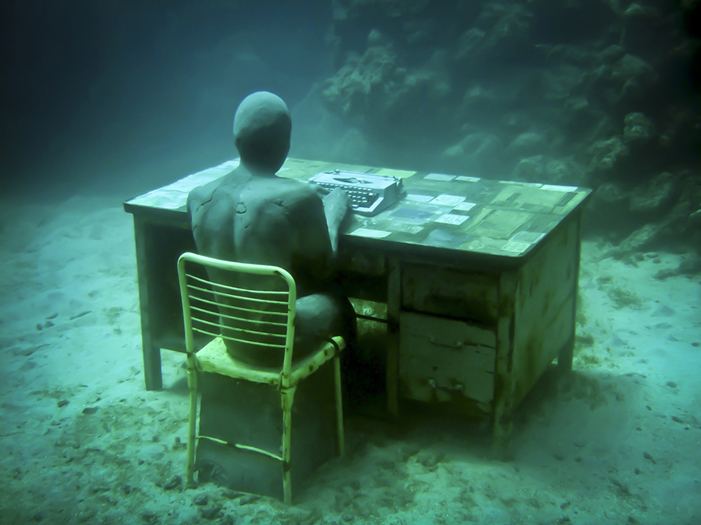
Jason de Caires Taylor, The Lost Correspondent 1 (2012). Courtesy of Jonathan LeVine Projects and the artist.
After graduating from the London Institute of Arts, British artist Jason de Caires Taylor decided to try his hand at diving, subsequently becoming a certified diving instructor. Some years later, Taylor has created several underwater sculpture gardens including one by the West Indies and another off the coast of Mexico.
Harkening to the lost treasures of sunken ships, Taylor’s The Lost Correspondent shows a person still strapped to their desk. For those heading back to the office, the image also conjures up that oh-so-familiar feeling of swimming through obligations while staying calmly at one’s desk.